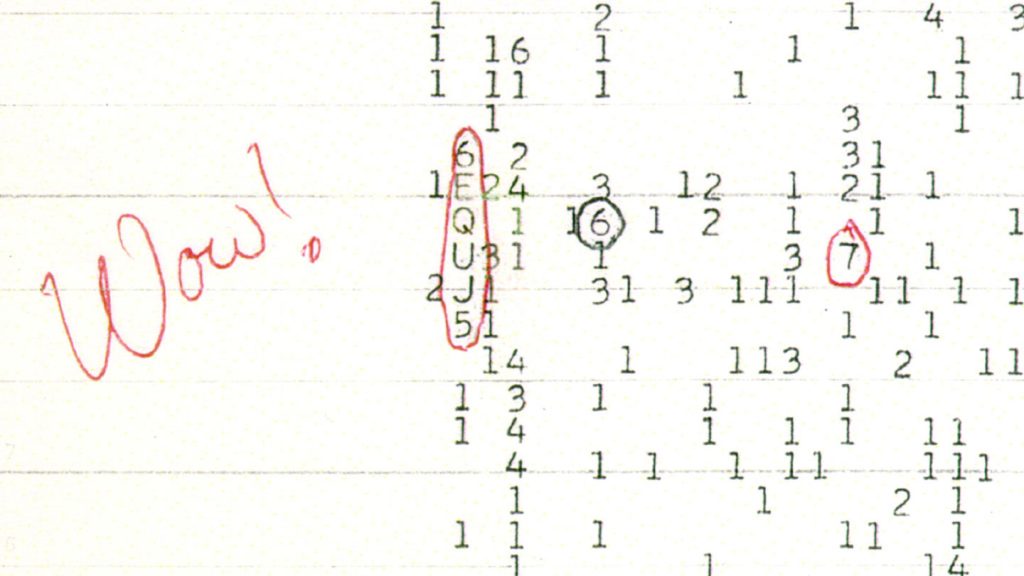The iconic “Wow!” signal was detected in 1977 by astronomer Jerry Ehman and his colleagues at the Big Ear radio telescope in Ohio State University. The signal was exceptionally bright and was in a narrow wavelength range associated with neutral hydrogen atoms. Despite efforts to find similar signals, none have been seen again. Some suggested explanations for the signal include comets in our solar system or interference from Earth-orbiting satellites, but none fully hold up. In 2020, astronomers sifted through data from the Arecibo radio telescope and found several signals similar to the “Wow!” but dimmer. These signals were attributed to clouds of cold atomic hydrogen scattered around the galaxy. The researchers proposed that a magnetar could emit a flare and excite the hydrogen atoms in a way that triggers a laser-like effect, creating a bright signal.
The Arecibo Observatory’s radio dish, which captured data similar to the “Wow!” signal, was damaged in 2020 and has since shut down. The discovery of similar signals raises questions about the nature of the original “Wow!” signal and poses challenges for SETI searches. If this explanation is correct, it could be a false positive for SETI, potentially complicating efforts to detect signals from extraterrestrial civilizations. However, even if the “Wow!” signal was naturally occurring, it would still be a significant scientific discovery. The search for extraterrestrial intelligence has led to many breakthroughs in astronomy and could continue to do so, even if the signals turn out to be from natural phenomena.
Astronomer Jason Wright of Penn State points out that the conditions required for a hydrogen maser to occur are delicate and specific, and it is not clear if they are even possible in the natural world. The potential discovery of such a phenomenon could lead to advancements in our understanding of astrophysics and the behavior of hydrogen atoms in space. The SETI project has been searching for events like these, and if a natural process can produce similar signals, it could create uncertainty in the detection of signals from alien civilizations. The details of the maser effect are being investigated further by Méndez and his colleagues, and their findings will be outlined in a follow-up paper.
The search for signals like the original “Wow!” signal continues to be an important area of study in astronomy. The possibility of detecting signals from extraterrestrial civilizations has captured the interest of many researchers and enthusiasts over the years. The discovery of similar signals from hydrogen clouds in the galaxy highlights the complexities of interpreting unusual astronomical phenomena. While the “Wow!” signal remains a mystery, the search for answers continues, opening up new avenues for scientific exploration. The potential implications of the discovery could have far-reaching consequences for our understanding of the universe and our place within it.
In conclusion, the hunt for signals from extraterrestrial civilizations and the discovery of similar signals from hydrogen clouds in the galaxy present challenges and opportunities for astronomers. While the original “Wow!” signal remains unexplained, the search for answers continues to drive scientific inquiry and inspire new discoveries in the field of astronomy. The potential implications of the discovery for SETI searches and our understanding of astrophysics underscore the importance of ongoing research in this area. As new technologies and techniques are developed, the chances of detecting signals from alien civilizations may increase, leading to exciting possibilities for future studies and exploration. The mystery of the “Wow!” signal continues to intrigue scientists and the public alike, highlighting the endless wonders of the universe and our quest to unlock its secrets.


